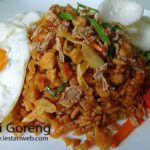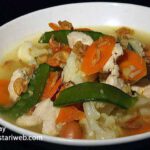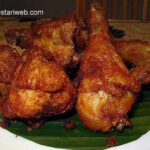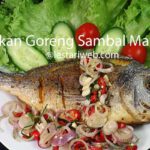Authentic Beef Rendang
Origin: Minangkabau Land – West Sumatra
Source: Filmawati, a friend as well as ex Colleague
Ingredients
- 1 kg beef, topside or silverside, diced about 3 cm on a side
- 2 stem lemon grass, bruished, cut into two pieces
- 1 pc fresh turmeric leaf (if any)
- 2 tbsp tamarind water (1 tsp tamarind pulp soak in 2 tbsp water
- 5 pc kaffir-lime leaves
- 2 l thick coconut milk
- 2 tsp salt or to taste
Spice for the paste
- 250 g large red chillies, de-seeded, chopped
- 10 pc shallots, chopped
- 5 gloves garlic, chopped
- 25 g galangale, peeled and chopped
- 25 g ginger, peeled, chopped





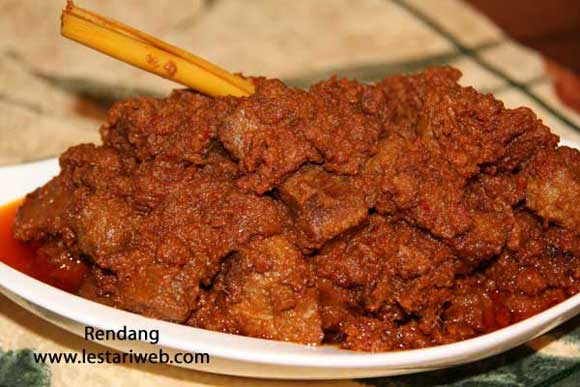
Indonesian Rendang
Rendang is a dish which originated from the Minangkabau ethnic group of Indonesia and now commonly served across the country. Rendang is one of the famous dish among 30 Indonesian Culinary Icons.One of the characteristic foods of Minangkabau culture, it is served at ceremonial occasions and to honour guests. Also popular in Malaysia and Singapore, rendang is traditionally prepared by the Malay community during festive occasions.Though rendang is sometimes described as being like a curry, and the name is sometimes applied to curried meat dishes in Malaysia, authentic rendang is NOTHING LIKE A CURRY. In Malay classical literacture, rendang is mentioned in Hikayat Amir Hamzah.(from year 1550).Rendang is made from beef (or occasionally chicken, mutton, water buffalo, duck, or vegetables like jackfruit or cassava) slowly cooked in coconut milk and spices for several hours until almost all the liquid is gone, allowing the meat to absorb the spicy condiments. The cooking process changes from boiling to frying as the liquid evaporates. The slow cooking process allows the meat to absorb all the spices and to become tender. The spices may include ginger, galangal, turmeric leaf, lemon grass and chillies. Chicken or duck rendang also contains tamarind and is usually not cooked for as long as beef rendang.There are two kinds of rendang: dried and wet. Dried rendang can be kept for 3-4 months, and it is for ceremonial occasions or to honour guests. Wet rendang, also known as kalio, can be found in Minangkabau restaurants, and without refrigeration, it should be consumed within a month. (Source: Wikipedia).Anyway before I forget….thx and all credit goes to Filma, my friend as well as ex colleague who taught me first how to cook authentic rendang properly 😉
Instructions
for Beef Rendang
- Put all ingredients for the paste in a blender or food processor.
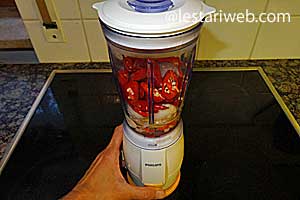
- Add 50 ml coconut milk to help the blending process and blend until smooth.
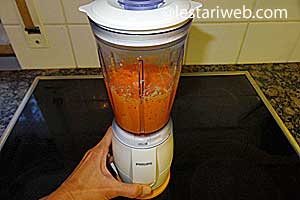
- Put the beef and spice paste into a Wok or a large saucepan (minimum capacity 4 liters).
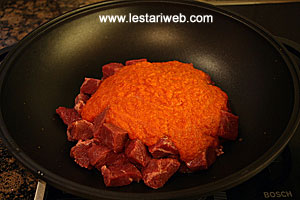
- Pour in the coconut milk, add the lemon grass, kaffir lime leaves and turmeric leaves. Stir to mix.
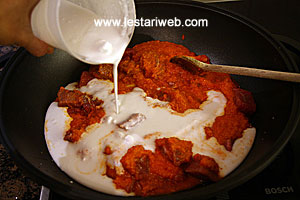
- Cook over medium-high heat until the coconut milk get boiled.
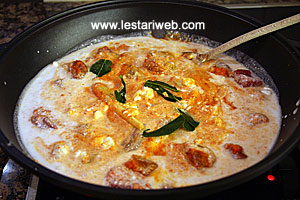
- Adjust the heat into medium and simmer for 1.5 hours uncovered until the coconut milk becomes thicker and oily. Stirring occasionally.
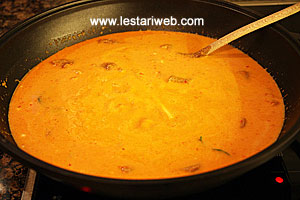
- Add the tamarind water and salt to taste. (Note: If you like to eat it with sauce you can stop the cooking now. This dish is called: Kalio /Wet Rendang)
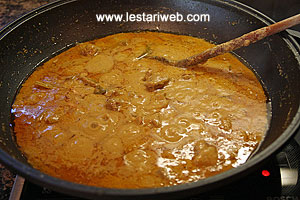
- If you like to eat it as rendang then continue cooking on low heat for about 30 minutes.
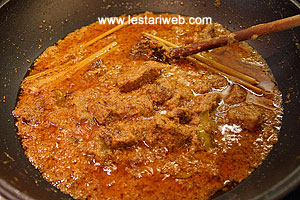
- Cook until the coconut milk is driven off and the beef and sauce becomes brown and almost dry. (At this stage you will probably need to stir all the time to prevent burning)
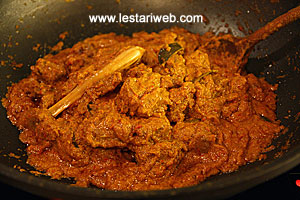
- Serve hot with rice and "Minangkabau Green Sambal".
Note & Tips
- Many Indonesians prefer a black colour rendang. To get this kind of rendang you need to add roasted grated coconut which's smoothly blended.
- I personally prefer to stop the cooking earlier to reserve it's thick delicates sauce as you see in the pic 🙂
popular Indonesian recipes
“Thank You for visiting my site. I won’t bother you with my life stories LOL :-D. Just get the recipe, have fun while cooking and enjoy your meal!”
Endang SW Lestari


